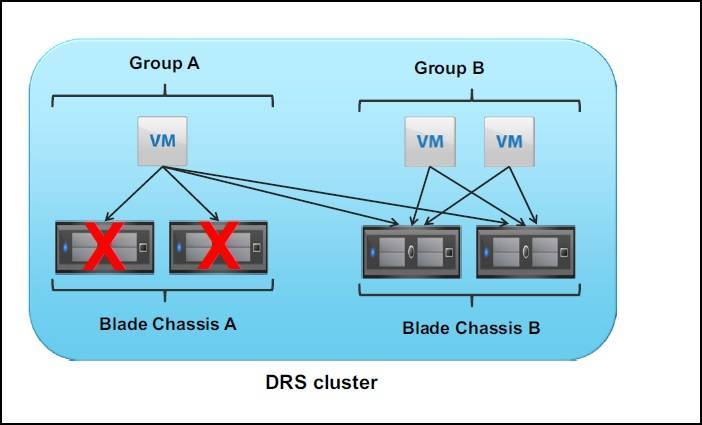Preferential DRS rules
The VM to host DRS rules can either be preferential or required. A preferential rule is softly enforced and can be violated if necessary, for example to ensure the proper functioning of DRS, HA, or DPM. Consider the following example (image source: VMware):
As you can see from the picture above, we have created two DRS groups for virtual machines (Group A and Group B) and two DRS groups for ESXi hosts (Blade Chassis A and Blade Chassis B).
The goal of this design is to force the virtual machines in Group A to run on the hosts in Blade Chassis A and to force the VMs in Group B to run on the hosts in Blade Chassis B. But if the hosts in Blade Chassis A fail, the VMs from Group A will be moved to hosts in Blade Chassis B.




